Introduction:
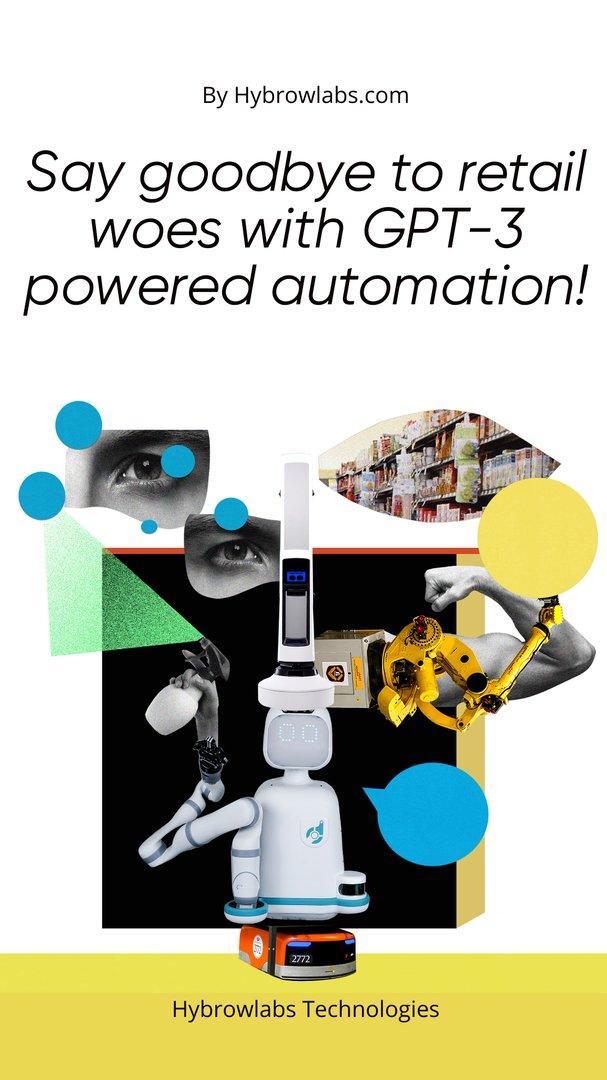
Retail operations can be a challenge for any business owner or manager. Whether it's managing inventory, processing orders, or analyzing customer data, these tasks can be time-consuming & labor-intensive. This can limit the growth potential of retail businesses, as there is only so much that can be done with limited resources.
Fortunately, advances in technology have made it possible to automate many of these tasks using artificial intelligence (AI) & machine learning (ML) algorithms. GPT-3, or Generative Pre-trained Transformer 3, is one such tool that has shown promise in scaling retail operations.
GPT-3 is a natural language processing (NLP) tool that is capable of generating human-like text. It has been trained on a massive amount of data & can understand & interpret complex language patterns. When combined with automation tools, GPT-3 can help streamline retail operations & improve scalability.
Overview of GPT-3:
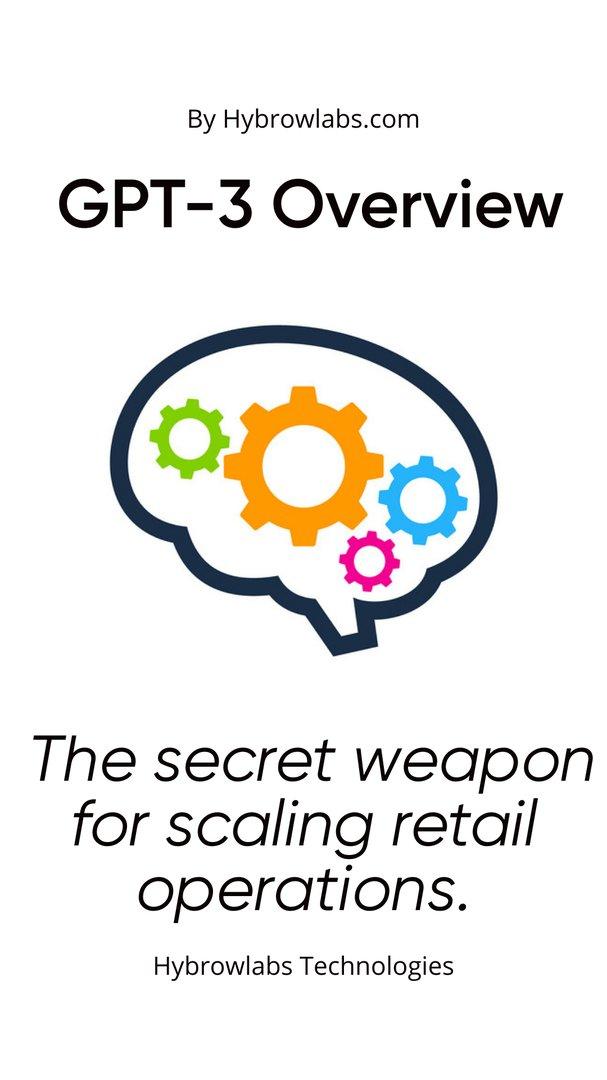
GPT-3 works by using machine learning algorithms to analyze & understand patterns in human language. It has been pre-trained on a massive amount of data, including books, articles, & websites, which allows it to understand & interpret complex language patterns.
One of the most impressive features of GPT-3 is its ability to generate text that is indistinguishable from that written by humans. This has led to numerous applications in areas such as chatbots, virtual assistants, & even creative writing.
However, GPT-3's capabilities are not limited to just generating text. It can also be used for automation tasks, such as data entry, customer service, & even content creation. This is where GPT-3-powered automation tools come in.
Using GPT-3 for automation involves training the model on specific tasks & integrating it with other software & tools. For example, GPT-3 can be used to automate customer service by answering common questions or processing simple requests. It can also be used to generate product descriptions or even entire websites.
The possibilities for GPT-3-powered automation are virtually limitless, as the model can be trained on a wide range of tasks & industries. However, it is important to note that GPT-3 is not a perfect solution & may require some human intervention to ensure accuracy & quality.
In conclusion, GPT-3 is a powerful language generation model that has the potential to revolutionize retail operations through automation. Its ability to understand & interpret complex language patterns makes it an ideal tool for tasks that require language processing. By leveraging GPT-3-powered automation tools, businesses can improve efficiency, reduce costs, & scale their operations with ease.
Use Cases for GPT-3-Powered Automation in Retail Operations:
GPT-3-powered automation tools have the potential to streamline & improve various aspects of retail operations. Here are some of the most promising use cases:
A. Customer Service:
One of the most common use cases for GPT-3 in retail operations is automating customer service. By training the model on common customer inquiries & requests, GPT-3 can provide quick & accurate responses to customers via chatbots or virtual assistants. This can help reduce response times, improve customer satisfaction, & free up employees to focus on more complex customer service tasks.
B. Inventory Management:
GPT-3 can be used to automate inventory management by analyzing sales data & predicting future demand. This can help retailers optimize their inventory levels, reduce waste, & ensure that popular items are always in stock. GPT-3 can also be used to automate reordering & restocking processes, saving time & reducing the risk of stockouts.
C. Pricing Optimization:
Retailers can use GPT-3 to analyze sales data & customer behavior to optimize pricing strategies. By training the model on pricing data & consumer behavior, GPT-3 can make recommendations for optimal pricing based on factors such as demand, competition, & customer preferences. This can help retailers maximize profits while remaining competitive in the marketplace.
D. Product Recommendations:
GPT-3 can be used to provide personalized product recommendations to customers based on their browsing & purchase history. By analyzing customer data & preferences, GPT-3 can make personalized recommendations that are more likely to result in a sale. This can help improve customer satisfaction & increase revenue for retailers.
Overall, GPT-3-powered automation tools have the potential to transform retail operations by improving efficiency, reducing costs, & enhancing customer satisfaction. By leveraging the power of GPT-3, retailers can scale their operations & remain competitive in an ever-changing marketplace.
List of 10 GPT-3 Powered Automation Tools:
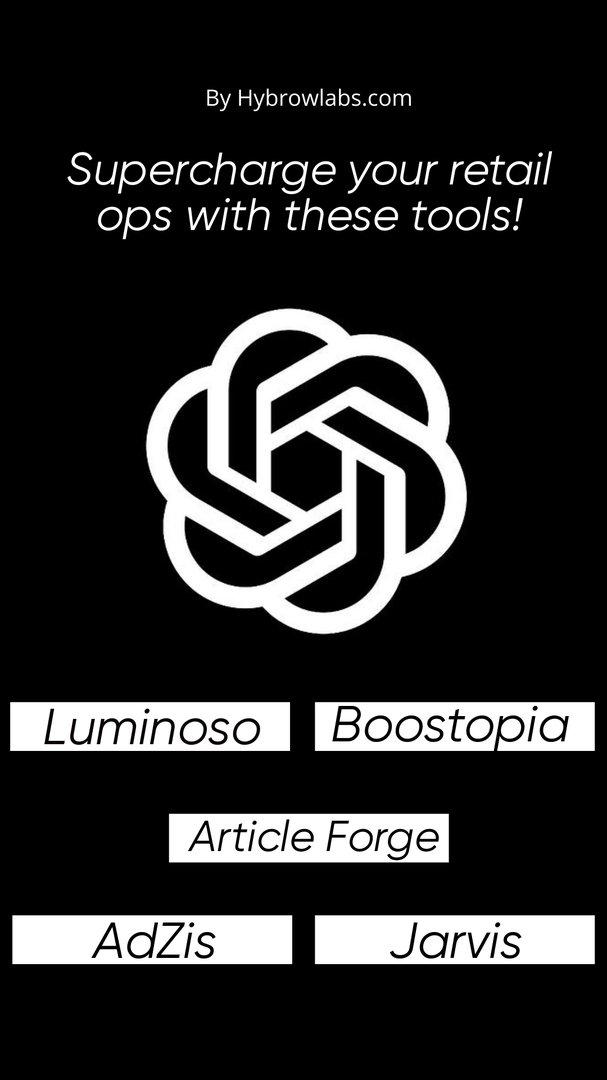
As the use of GPT-3 continues to grow in popularity, several automation tools have been developed to help businesses streamline their operations. Here are ten GPT-3-powered automation tools that can help retailers scale their operations:
1. Luminoso:
Luminoso is a natural language understanding tool that uses GPT-3 to analyze customer feedback & automate customer service tasks.
2. Copysmith:
Copysmith is a tool that uses GPT-3 to generate product descriptions, ad copy, & other marketing materials.
3. AdZis:
AdZis is an e-commerce automation platform that uses GPT-3 to automate product categorization, product descriptions, & SEO optimization.
4. Phrasee:
Phrasee is a marketing automation tool that uses GPT-3 to generate email subject lines, social media posts, & other marketing content.
5. Jarvis:
Jarvis is a content creation platform that uses GPT-3 to generate blog posts, product descriptions, & other written content.
6. Article Forge:
Article Forge is a content creation tool that uses GPT-3 to generate high-quality, SEO-optimized articles in minutes.
7. Copy.ai:
Copy.ai is a marketing automation tool that uses GPT-3 to generate ad copy, social media posts, & other marketing materials.
8. Kaleido:
Kaleido is a virtual assistant that uses GPT-3 to automate customer service tasks, such as answering common questions & processing simple requests.
9. Boostopia:
Boostopia is a customer service automation tool that uses GPT-3 to provide personalized support to customers via chatbots & virtual assistants.
10. Troops:
Troops is a sales automation platform that uses GPT-3 to automate sales tasks, such as lead qualification & prospecting.
These are just a few examples of the many GPT-3-powered automation tools available to retailers. By using these tools, businesses can improve efficiency, reduce costs, & scale their operations with ease.
Technical Implementation of GPT-3 Powered Automation Tools in Retail Operations:
While GPT-3-powered automation tools offer many benefits for retailers, there are several technical considerations to keep in mind when implementing these tools. Here are some important steps to consider when implementing GPT-3-powered automation tools in retail operations:
1. Choosing a GPT-3-powered automation tool:
The first step in implementing GPT-3-powered automation tools is to choose the right tool for your business needs. Consider factors such as the tool's capabilities, ease of use, & pricing when selecting a tool.
2. Integrating with existing systems:
Once you have chosen a tool, you will need to integrate it with your existing systems. This may involve working with your IT team to ensure that the tool can be integrated smoothly with your existing systems.
3. Data collection & processing:
To train the GPT-3 model, you will need to collect & process large amounts of data related to your business operations. This may involve gathering customer feedback, sales data, & other relevant information.
4. Model training:
Once you have collected the necessary data, you will need to train the GPT-3 model. This involves feeding the model with large amounts of data & allowing it to learn patterns & make predictions based on that data.
It is important to note that implementing GPT-3-powered automation tools requires a significant investment of time & resources. However, the benefits of these tools can be significant, including increased efficiency, improved customer satisfaction, & reduced costs.
Benefits of GPT-3-Powered Automation in Retail Operations:

Implementing GPT-3-powered automation tools in retail operations can offer several benefits for businesses looking to scale their operations. Here are some of the key benefits:
1. Improved Scalability:
GPT-3-powered automation tools can help businesses scale their operations by automating routine tasks & freeing up employees to focus on more complex tasks. This can help businesses expand their operations without having to hire additional staff.
2. Improved Customer Experience:
GPT-3-powered automation tools can help improve the customer experience by providing faster & more accurate responses to customer inquiries. For example, chatbots powered by GPT-3 can understand natural language & provide personalized recommendations to customers, improving their overall experience.
3. Cost Savings:
GPT-3-powered automation tools can help businesses reduce costs by automating tasks that would otherwise require human intervention. This can lead to significant cost savings over time, especially for tasks that are repetitive or time-consuming.
Overall, implementing GPT-3-powered automation tools in retail operations can help businesses remain competitive in the marketplace by improving scalability, and customer experience, & reducing costs. By leveraging the power of GPT-3, businesses can automate routine tasks, streamline operations, & focus on strategic initiatives that drive growth & profitability.
Challenges & Risks of GPT-3-Powered Automation in Retail Operations:
While there are many benefits to using GPT-3-powered automation tools in retail operations, there are also several challenges & risks to consider. Here are some of the key challenges & risks associated with implementing these tools:
1. Data Privacy:
GPT-3-powered automation tools rely on large amounts of data to train their models. However, this data can contain sensitive customer information that needs to be protected. Businesses need to ensure that they are collecting, storing, & processing customer data in compliance with data privacy regulations.
2. Model Bias:
GPT-3 models are only as good as the data they are trained on. If the data is biased, the model can produce biased results. This can lead to unintended consequences, such as discriminatory pricing or product recommendations. Businesses need to ensure that they are collecting diverse data & monitoring their models for bias.
3. Technical Complexity:
Implementing GPT-3-powered automation tools can be technically complex & require significant expertise. Businesses need to ensure that they have the necessary technical expertise to implement & maintain these tools.
It is important for businesses to carefully consider these challenges & risks before implementing GPT-3-powered automation tools. By doing so, businesses can take steps to mitigate these risks & ensure that they are using these tools in a responsible & effective manner.
Conclusion:
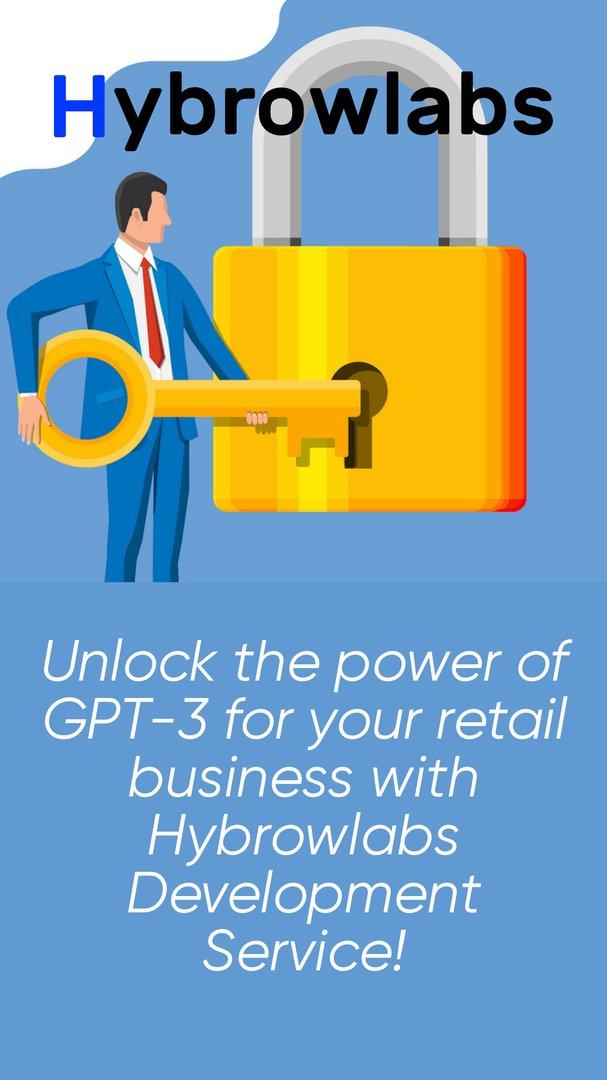
In conclusion, the adoption of GPT-3 powered automation tools has significantly impacted the retail industry by providing solutions for many of the challenges that retailers face. The use of these tools has enabled retailers to scale their operations, enhance customer experience, and optimize their supply chain management.
The key points of the article include the impact of GPT-3 in retail operations, which has been instrumental in optimizing customer service, personalization, and marketing strategies. Retailers can leverage GPT-3 to automate processes, analyze consumer data, and make accurate predictions about customer behavior. With the help of GPT-3, retailers can improve their productivity, reduce costs, and improve efficiency by automating repetitive tasks. For professional assistance in implementing GPT-3 powered automation tools in retail, consider using the Hybrowlabs Development Service.
FAQ
1. What is GPT-3, & how can it help retailers scale their operations?
GPT-3 (Generative Pre-trained Transformer 3) is an artificial intelligence language model that uses deep learning techniques to generate human-like text. By leveraging GPT-3 powered automation tools, retailers can automate various repetitive tasks, such as inventory management, order processing, & customer service. GPT-3 can also analyze vast amounts of customer data, enabling retailers to make accurate predictions about customer behavior & preferences, allowing them to personalize their marketing strategies & improve customer experience.
2. How can GPT-3 improve the customer experience?
GPT-3 can help retailers improve the customer experience by providing personalized recommendations based on past purchase history, search history, & customer data. GPT-3 can also be used to automate customer service, such as chatbots that can answer customer inquiries & provide support 24/7. By using GPT-3 to optimize customer experience, retailers can increase customer satisfaction & loyalty.
3. Can GPT-3 powered automation tools improve supply chain management?
Yes, GPT-3 powered automation tools can improve supply chain management by analyzing consumer data to optimize supply chain operations. By analyzing data such as sales trends & customer preferences, retailers can make better-informed decisions regarding inventory management & product distribution. This capability allows retailers to improve their delivery times & reduce supply chain costs.
4. How can GPT-3 powered automation tools reduce costs for retailers?
GPT-3 powered automation tools can reduce costs for retailers by automating repetitive tasks, such as inventory management, order processing, & customer service. By automating these tasks, retailers can reduce their reliance on human labor & improve overall business efficiency. Additionally, GPT-3 can analyze vast amounts of data, providing retailers with accurate predictions about consumer behavior & preferences. By leveraging this information, retailers can optimize their operations, reduce waste, & increase profitability.
5. What is the future of GPT-3 powered automation tools in retail operations scaling?
The future of GPT-3 powered automation tools in retail operations scaling looks promising. As technology continues to advance, these tools will become even more sophisticated, offering retailers even more comprehensive solutions for their operations. GPT-3 powered automation tools will continue to drive growth in the retail industry by enhancing customer experience, streamlining supply chain management, & improving overall business operations. By investing in these tools, retailers can future-proof their operations, reduce costs, & drive growth for years to come.



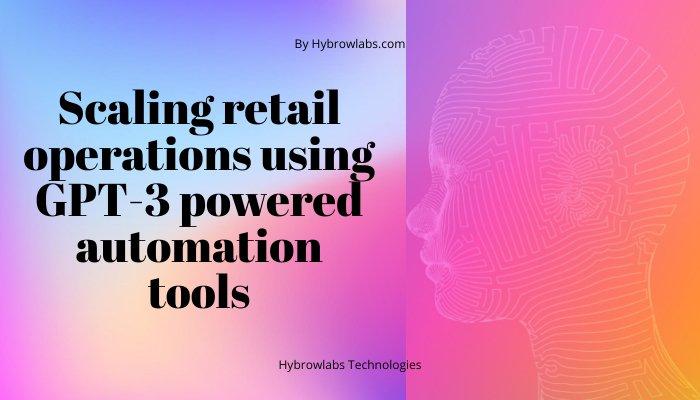


a3dc85.jpg)
.jpg)
fd8f11.png)


.jpg)
.jpg)